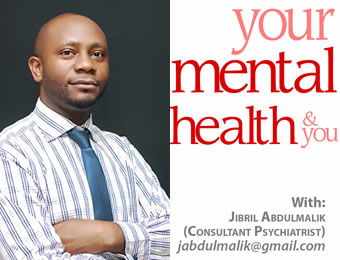By their action, all these drugs have common features: they act on the brain and cause sedation, as well as changes in the mood, thinking or behaviour of the individual. It may also cause relaxation and a feeling of calmness, or block transiently, the sensation of pain or tiredness. This latter effect is often the reason why drug use is popular among menial labourers and commercial transport workers who toil from morning till evening – come rain or shine.
Common fallacies about drug abuse
- “I am in control and I know what I am doing. I am not crazy and I only take small quantities”.
- “It is not harmful when used in moderation”
- “You need to be taking hard drugs like cocaine and heroin to become an addict”.
- “Only foolish people and street thugs who cannot regulate themselves end up having problems with alcohol or any other drug”.
- “I only take it when I have difficulties with sleeping, and it is not all the time”.
The problem with these fallacies is that they help us feel good and we console ourselves that we don’t have any problem, so we can continue with the habit. However, the danger is that our body gradually becomes used to the drug and if the habit is sustained, it will get to a stage where we will then find it very difficult to function without taking the drug. This is the stage where addiction sets in.
The stages of substance use
1) Experimentation/initiation
2) More frequent use
3) Preoccupation with substance abuse
4) Dependence/addiction
Illustration of these stages with the story of Funke
- Funke was a brilliant 21-year-old law student, but her room-mates always teased her for refusing to drink alcohol.
- After three months, she eventually decided to try it. She took a few sips and felt calm and happy without any worries, so she thought it was really good. She then took some more and enjoyed it. (Experimentation/initiation stage)
- Thereafter, she started taking a bottle every day; then graduated to taking three or four bottles daily. It became the first thing she would take in the morning and the last thing she would took at night. (Stages of more frequent use and pre-occupation with use)
- She started missing classes, as most mornings, she would wake up late and suffer from a hangover with terrible headaches.
- Her academic performance started deteriorating and she had to spend two extra sessions in school. Her popular nickname became “Funke Shayo” (Funke the drunkard), but she just could not do without alcohol anymore. (Stage of dependence or addiction to alcohol).
- University of Ibadan: Seven years at the University, she fell ill, with abdominal swelling, severe pains and yellowish discoloration of the eyes. She was diagnosed as having liver failure in University College Hospital (UCH), Ibadan. She needed about N10 million naira to have a liver transplant operation done – with no guarantee that it would be a successful procedure. If only she had not experimented with alcohol use. She recalled with bitterness, that her friends who introduced her to alcohol were still fine and healthy.
While the common argument is that I know someone, who has been doing or taking drugs for several years and nothing has happened to that person, the real question is, do you want to gamble with your own life? Our bodies are different and our ability to tolerate different drugs also vary. However, what is not in doubt is that drug abuse frequently results in serious complications – including death from overdose.
Once addiction sets in, it is extremely difficult to break the habit – even in the best of facilities abroad. For example, several celebrities in Europe and America with drug abuse problems are usually in and out of rehabilitation centres like a revolving door. And this pattern persists until some of them die from drug overdose. Famous but unfortunate examples abound, such as Michael Jackson who started from taking medications purportedly to help him sleep better until he started taking different combinations in high doses until he eventually died from drug overdose. Other examples include Amy Winehouse, Whitney Houston…and her daughter recently, etc.
Conclusion
Let us all take heed and share the message with our children and loved ones that: Prevention is always better than seeking for cure – particularly with respect to drug abuse. And watch the company you keep.
ALSO READ: Senate moves to tackle drug, substance abuse







